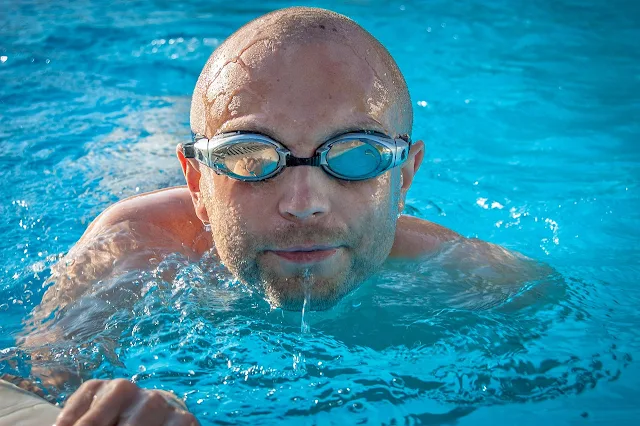Exercise-Induced Hypertension in Middle Age: Risk of Stroke, Sudden Death, and Prevention
Introduction
Exercise is essential for maintaining a healthy lifestyle, but for some middle-aged individuals, it can trigger a hidden danger: exercise-induced hypertension. This condition can significantly increase the risk of serious health issues, such as stroke and sudden cardiac death. Understanding the risks and learning how to prevent this condition can save lives.
 |
| Improper Exercise: A Double-Edged Sword for Your Health |
What is Exercise-Induced Hypertension?
Exercise-induced hypertension (EIH) occurs when blood pressure rises abnormally during physical activity. While an increase in blood pressure is normal during exercise, some individuals experience a dangerous spike that can put excess strain on the heart and blood vessels. For middle-aged adults, this condition becomes particularly concerning due to the natural aging of the cardiovascular system.
How Does It Lead to Stroke and Sudden Death?
Stroke Risk: The increased pressure on blood vessels caused by EIH can damage arteries, making them more prone to ruptures or blockages. This damage can lead to a hemorrhagic or ischemic stroke, both of which are life-threatening.
Sudden Cardiac Death: The heart’s response to high blood pressure during exercise may lead to arrhythmias (irregular heartbeats) or cardiac arrest. If untreated or unnoticed, this can result in sudden cardiac death, a serious risk especially for those with undiagnosed heart conditions.
Signs to Watch For
Middle-aged individuals may not always experience symptoms, making EIH a silent threat. However, some warning signs include:
- Severe headaches during or after exercise
- Chest pain or discomfort
- Shortness of breath after minimal exertion
- Dizziness or feeling faint
If any of these symptoms occur, it is critical to stop exercising and consult a healthcare professional immediately.
 |
| If you've been experiencing frequent headaches recently, be sure to consult a doctor. |
Risk Factors
Certain factors increase the likelihood of developing exercise-induced hypertension:
- Age: Those over 40 are at a higher risk.
- High blood pressure (hypertension): Pre-existing hypertension can worsen during exercise.
- Sedentary lifestyle: Lack of regular physical activity can weaken the heart and blood vessels.
- Family history: A family history of heart disease, stroke, or high blood pressure can increase your risk.
Prevention Tips
Taking proactive measures can help reduce the risk of exercise-induced hypertension and its serious consequences.
- Regular Checkups: Before starting an exercise program, get a full medical checkup to ensure your heart is healthy.
- Monitor Your Blood Pressure: Use a blood pressure monitor to track your levels before, during, and after exercise. This will help identify any abnormal spikes.

Regular blood pressure checks are the foundation of good health. - Gradual Increase in Intensity: Avoid jumping into high-intensity workouts. Start with moderate exercise and gradually increase intensity to allow your heart to adapt.
- Stay Hydrated: Dehydration can worsen blood pressure issues during exercise. Drink plenty of water before, during, and after physical activity.
- Choose Safe Exercises: Low-impact exercises such as walking, cycling, and swimming are better options for those at risk of EIH. Avoid exercises that involve sudden bursts of energy, such as sprinting or heavy weightlifting.

Even just walking in the swimming pool can benefit your health. - Medication: If you have high blood pressure, follow your doctor’s advice and take any prescribed medications as directed.
When to See a Doctor
If you experience any of the warning signs or have a family history of heart disease, it is essential to see a doctor. A stress test or ambulatory blood pressure monitoring may be recommended to detect any abnormal increases in blood pressure during exercise.
Conclusion
Exercise is crucial for staying healthy, but for middle-aged individuals, it’s important to be aware of the potential risks of exercise-induced hypertension. By staying informed, monitoring blood pressure, and taking preventive measures, the risks of stroke and sudden cardiac death can be significantly reduced. Always consult with a healthcare provider before beginning any new exercise regimen, especially if you’re over 40 or have pre-existing health conditions.
